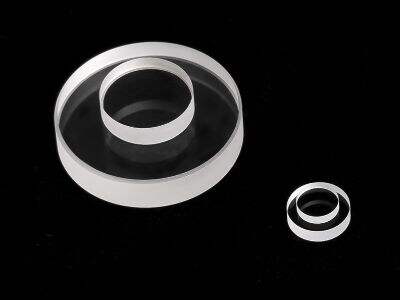A cuvette, meaning "little vessel", is a small tube of circular or square cross section, sealed at one end, made of plastic, glass, or fused Quartz Cuvettes. Though they may appear the same, they have differences that are important to their performance.
An investigation of glass and quartz cuvettes for their elemental composition
Silica, soda ash, and lime are used to make glass cuvettes. On the contrary, Jinke Optical quartz cuvettes are produced from pure quartz crystal. This unique composition makes them suitable for a specific type of spectroscopy.
Such differences between glass and quartz in optical properties can be revenedentious.
The transmission rate of glass cuvettes is 10 times lower than that of quartz cuvettes. This also means that quartz cuvette let more light through, so they are suitable for high sensitivity applications. For less precise applications, glass cuvettes may be used instead.
Strength and resistance of glass vs quartz cuvettes
Quartz cuvettes are less inclined to breakage than glass cuvettes. The reason for this is that quartz is a stronger material and is much less susceptible to scratches and breaking. Although glass cuvettes are cheaper, they are more delicate and have to be replaced periodically.
Cost of using glass vs quartz cuvette
Glass cuvettes are usually less expensive than quartz cuvettes. This is why they are frequently used in routine spectroscopy, but are not so common where high accuracy is desired. Although quartz cuvettes are more costly, they are a good investment for work demanding the highest optical quality and cuvette longevity.
Assessment of the Influence of the Cuvette Material on Sampling Precision
The cuvette material may in some cases have a relatively large influence on the accuracy of the measurement. Quartz window cuvettes, on the other hand, are more durable and less likely to warp or absorb light, providing more reliable results. As far as glass cuvettes are concerned, it can be used for general purposes, but errors to deteriorate measurement stability may be arisen.
Table of Contents
- An investigation of glass and quartz cuvettes for their elemental composition
- Such differences between glass and quartz in optical properties can be revenedentious.
- Strength and resistance of glass vs quartz cuvettes
- Cost of using glass vs quartz cuvette
- Assessment of the Influence of the Cuvette Material on Sampling Precision
 EN
EN
 AR
AR
 BG
BG
 HR
HR
 CS
CS
 DA
DA
 NL
NL
 FI
FI
 FR
FR
 DE
DE
 EL
EL
 HI
HI
 IT
IT
 JA
JA
 KO
KO
 NO
NO
 PL
PL
 PT
PT
 RO
RO
 RU
RU
 ES
ES
 SV
SV
 TL
TL
 ID
ID
 LV
LV
 SR
SR
 SK
SK
 UK
UK
 VI
VI
 HU
HU
 MT
MT
 TH
TH
 TR
TR
 FA
FA
 AF
AF
 MS
MS
 GA
GA
 IS
IS
 LA
LA
 KK
KK







